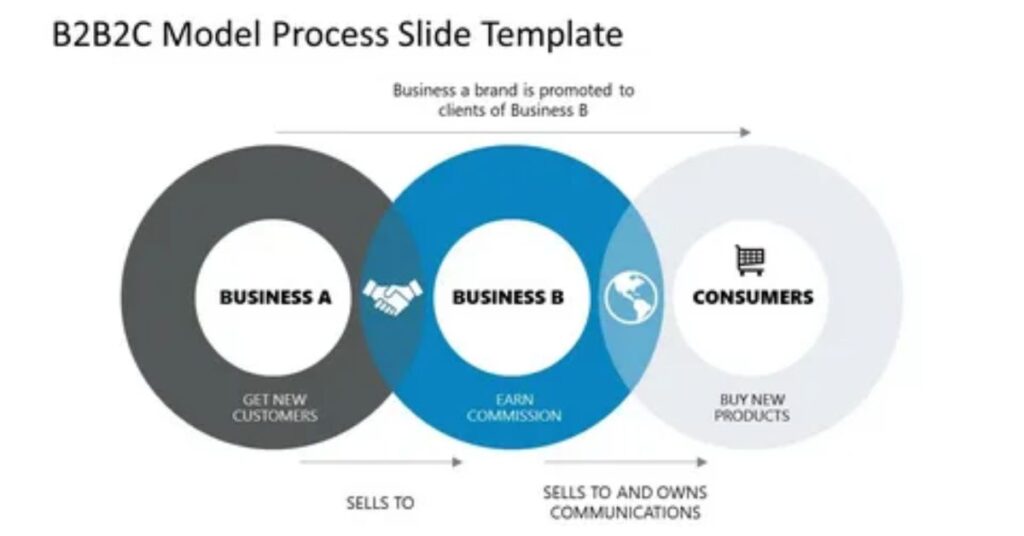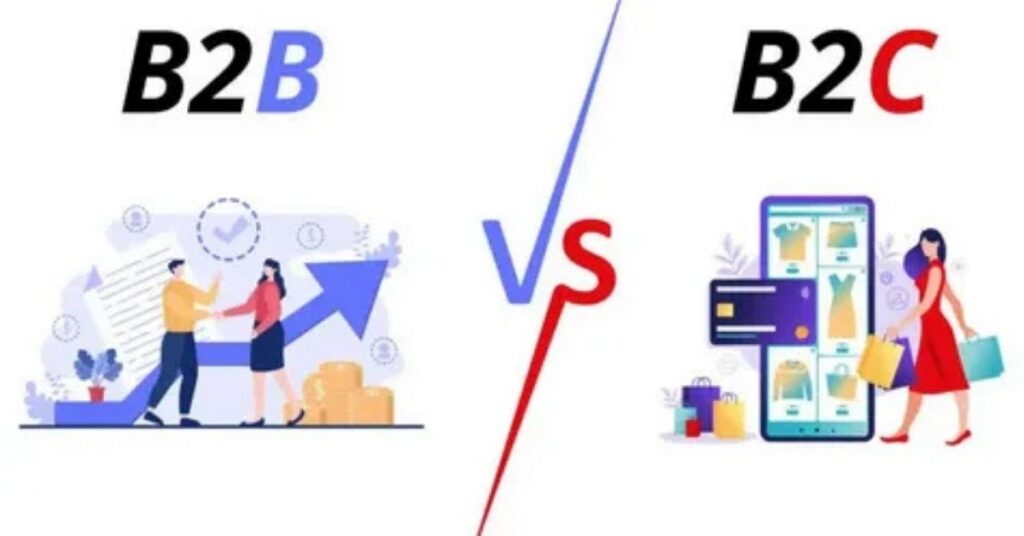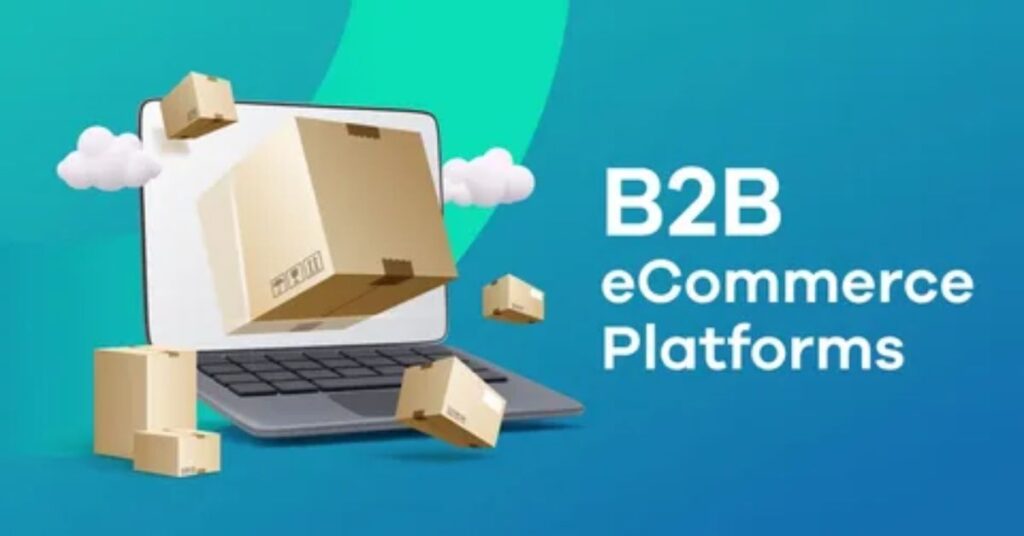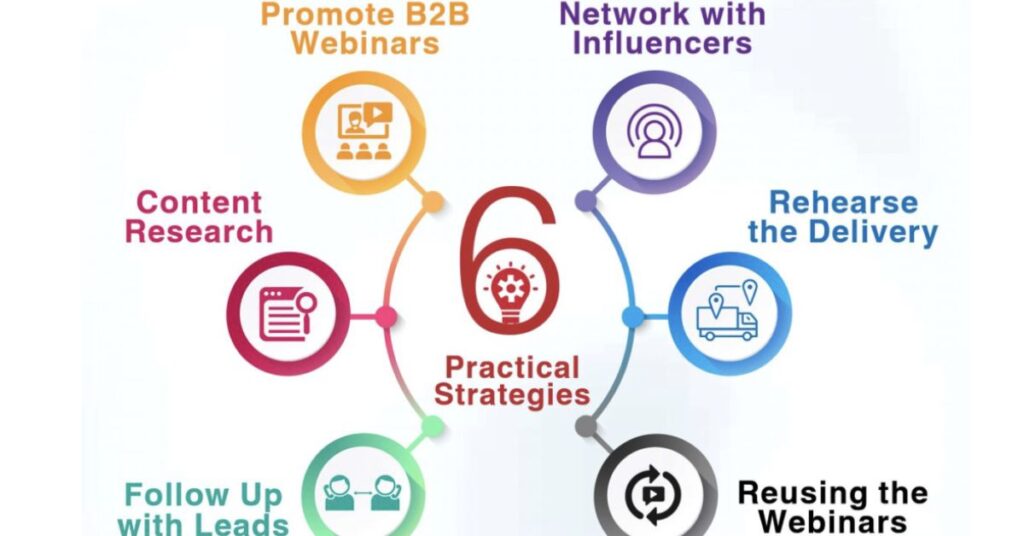Imagine a world where businesses did not work with each other. No manufacturers are supplying parts to car makers. No software companies are helping hospitals run smoothly. No wholesalers delivering goods to shops. Without Business-to-Business (B2B), our global economy would fall apart.
In 2025, B2B is no longer just about buying and selling; it is about building smarter partnerships, scaling faster, and using digital tools to win clients. If you run a company or plan to start one, understanding Business-to-Business strategies is the key to growth.
In this guide, we will break down what B2B is, how it works, real business-to-business examples, challenges, and the strategies you can use to grow, scale, and win clients in 2025.
- What is Business to Business (B2B)?
- Why Business-to-Business Matters in 2025
- Business-to-Business vs. Business-to-Consumer
- How Does Business-to-Business Work?
- Types of Business-to-Business Companies
- Business-to-Business Industries in 2025
- Business-to-Business E-Commerce in 2025
- Benefits of Business-to-Business
- Challenges in Business-to-Business
- Business-to-Business Strategies for 2025 (How to Grow, Scale & Win Clients)
- Business-to-Business Examples in Real Life
- Conclusion
- FAQ's
What is Business to Business (B2B)?

Business-to-Business (B2B) means commercial transactions between two companies, not between a company and individual consumers. In simple terms, one business provides goods or services that help another business operate, grow, or serve its customers better.
For example:
- A farmer sells wheat in bulk to a bread manufacturing company, which uses it to produce bakery products.
- A software development firm provides Customer Relationship Management (CRM) tools to a bank, helping it manage clients and improve digital services.
- A textile supplier delivers fabrics to a clothing brand for use in its fashion line.
- A logistics company handles transportation for an e-commerce retailer, ensuring faster and more reliable deliveries.
Unlike Business-to-Consumer (B2C) models, where products are sold directly to individuals, B2B relationships often involve bulk orders, long-term contracts, and customized business solutions. These partnerships form the backbone of modern industries, ensuring that supply chains, manufacturing, and service networks work efficiently.
You can learn more about B2B vs. B2C from Investopedia’s guide.
Why Business-to-Business Matters in 2025
The global economy runs on B2B companies. From construction firms buying cement to hospitals purchasing medical software, these deals keep industries moving.
Key reasons why B2B is important:
- Fuels the supply chain
B2B companies are the engines that power the global supply chain. Manufacturers depend on suppliers for raw materials, retailers rely on distributors for inventory, and service firms use software providers for smooth operations.
Without these partnerships, production and delivery cycles would slow down or collapse entirely. - Creates jobs
Every successful B2B transaction supports thousands of jobs, from logistics staff and engineers to marketers and IT professionals.
A strong B2B network ensures continuous employment and skill development across interconnected sectors like energy, technology, and transportation. - Drives innovation
Collaboration between businesses often sparks innovation. When tech startups partner with manufacturers or service providers, they co-create smarter tools, improve efficiency, and solve real-world challenges.
These B2B collaborations push industries toward digital transformation and sustainability. - Helps businesses expand
B2B relationships open doors to global opportunities. Through distributors, e-commerce platforms, and joint ventures, even small businesses can reach international clients without building costly infrastructure.
This makes B2B a powerful tool for scaling in today’s competitive economy.
In fact, business-to-business e-commerce is growing faster than traditional retail. A report by Statista shows that global B2B e-commerce sales are projected to reach $36 trillion in 2025.
Business-to-Business vs. Business-to-Consumer

Let’s make it simple with a quick comparison table:
| Feature | B2B (Business to Business) | B2C (Business to Consumer) |
| Customer Type | Businesses | Individual Consumers |
| Order Size | Bulk (large orders) | Small (single items) |
| Relationship Type | Long-term contracts | Quick, transactional |
| Example | Salesforce sells software to firms | Amazon is selling shoes to you |
If you are building a business-to-business plan, you must think long-term, focusing on relationships rather than quick one-time sales.
How Does Business-to-Business Work?
B2B works like a web of connections. One business produces something that another business needs. The process usually includes:
- Research
Businesses begin by researching potential partners who match their needs in quality, pricing, and reliability. This step ensures they choose suppliers or buyers who can provide long-term value and consistency. - Negotiation
Once potential partners are identified, both sides negotiate on pricing, product specifications, timelines, and payment methods. A clear and transparent negotiation builds trust and avoids future disputes. - Contract
After mutual understanding, a written contract is created that defines roles, responsibilities, terms, and conditions. This legal document protects both parties and ensures accountability during the transaction. - Delivery
When the contract is signed, suppliers deliver goods or services as per agreed terms. Timely and accurate delivery strengthens business credibility and ensures smoother operations between partners. - Ongoing Relationship
The relationship does not end after one deal; it grows through consistent communication and reliable service. Long-term B2B success depends on nurturing these connections and delivering continuous value.
To strengthen your company’s image and trust, explore the best brand management tools in 2025 that help maintain consistency across all platforms.
Types of Business-to-Business Companies
When you look at the B2B company list, you will find four main types:
1. Manufacturers
Manufacturers form the backbone of B2B industries by ensuring a steady supply of essential goods to other companies. Their efficiency and production capacity often determine how quickly other businesses can deliver to consumers.
2. Wholesalers & Distributors
Wholesalers bridge the gap between production and retail, offering cost advantages through bulk purchasing. They help streamline the supply chain, making product availability faster and more reliable for retailers.
3. Service Providers
Service providers play a key role in helping businesses operate smoothly and scale efficiently. Their expertise allows companies to focus on core functions while outsourcing specialized tasks like advertising or customer management.
4. Software Companies
Software companies empower businesses to automate operations, analyze data, and collaborate digitally. In 2025, such B2B software solutions are essential for maintaining productivity, communication, and long-term growth.
In B2B industries, visual appeal matters too. Learn how custom stickers for packaging can enhance brand recognition and customer loyalty in 2025.
Business-to-Business Industries in 2025
B2B covers almost every sector. Some leading industries include:
- Manufacturing
Manufacturers form the backbone of B2B by supplying essential materials, machinery, and components to other companies. They enable industries to produce finished goods efficiently and maintain a stable supply chain. - Technology
Tech companies drive B2B innovation through IT services, cloud computing, and cybersecurity solutions. They help businesses automate processes, improve data security, and scale faster in the digital economy. - Wholesale & Distribution
Wholesalers and distributors bridge the gap between producers and retailers, ensuring smooth product flow. Their bulk supply systems help businesses reduce costs and maintain consistent inventory levels. - Healthcare
In B2B healthcare, companies supply hospitals and clinics with software, medical devices, and pharmaceuticals. These partnerships improve patient care and streamline healthcare operations. - Construction
The construction sector depends on B2B suppliers for cement, steel, tools, and heavy machinery. Reliable B2B relationships help contractors meet project deadlines and maintain quality standards. - Energy
Energy companies engage in B2B by providing oil, gas, and renewable energy solutions to industrial clients. These collaborations power manufacturing units, transport networks, and urban infrastructure sustainably.
For more detailed business-to-business examples, see Forbes’ B2B insights.
Business-to-Business E-Commerce in 2025

One of the fastest-growing parts of B2B is business-to-business e-commerce. Companies now use online platforms to buy and sell goods directly.
Benefits of B2B e-commerce:
- Faster transactions
Digital platforms automate ordering and payment processes, reducing manual delays. This speed helps businesses save time and serve clients more efficiently. - Easy bulk ordering
B2B e-commerce systems allow companies to purchase large quantities in one click. It simplifies supply management and ensures consistent product availability for customers. - Global reach
Online B2B marketplaces connect buyers and sellers worldwide. Even small businesses can now expand into international markets without setting up physical offices. - Secure payments
Modern B2B platforms use encrypted payment gateways and fraud detection tools. This ensures safe and transparent financial transactions between businesses across the globe.
For better client acquisition and profit margins, explore our Small Business Pricing Guide 2025.
Business-to-Business E-Commerce Examples:
- Alibaba
Alibaba connects millions of businesses worldwide, allowing companies to buy and sell products in bulk through a trusted digital platform. - Amazon Business
Amazon Business helps organizations purchase office supplies, electronics, and other essentials in bulk with business-only pricing and fast delivery. - Shopify
Shopify B2B enables wholesalers and manufacturers to create customized online stores, manage bulk orders, and streamline business-to-business sales efficiently.
If you are planning a business-to-business plan, including an e-commerce strategy is a must in 2025.
Benefits of Business-to-Business
Here is why B2B companies love this model:
- Cost Efficiency
Bulk buying lowers costs, allowing businesses to maximize profit margins while maintaining product quality. - Specialized Products/Services
B2B markets offer exclusive products and custom services tailored to meet specific industry demands. - Stronger Relationships
Long-term partnerships are built on mutual trust, reliability, and consistent performance between businesses. - Market Stability
Reliable supply chains and recurring contracts make the B2B market less volatile compared to consumer markets. - Business Expansion
Collaborating with other companies helps businesses enter new regions and discover new revenue opportunities. - Better Supply Chain Management
Efficient coordination between suppliers and distributors ensures smooth operations and faster delivery to clients.
Challenges in Business-to-Business
Even with benefits, B2B has challenges:
- Long Sales Cycles
Decisions take time because businesses carefully evaluate suppliers before committing to large deals. - High Expectations
Buyers demand excellent quality, reliability, and support since B2B partnerships directly impact their operations. - Maintaining Relationships
Trust must be built over the years through consistent communication, transparency, and value delivery. - Technical Issues
Integration between different business systems can be complex, often requiring skilled IT support and planning. - Regulatory Compliance
Companies must follow strict laws and industry standards to ensure safe, ethical, and legal business practices. - Competition
Standing out among many B2B companies requires innovation, branding, and unique value propositions.
Business-to-Business Strategies for 2025 (How to Grow, Scale & Win Clients)

Here are proven B2B strategies for 2025:
1. Build Digital Presence
Use SEO, social media, and LinkedIn to connect with businesses.
A strong online presence boosts visibility, builds credibility, and attracts quality leads organically.
2. Personalize Your Approach
Every business is unique. Customize offers for specific needs.
Personalized marketing helps build trust and increases the chances of long-term B2B partnerships.
3. Use Data & Analytics
Leverage tools like Google Analytics and CRM software to track clients.
Data-driven insights allow smarter decision-making and help improve customer acquisition strategies.
4. Focus on Long-Term Relationships
Do not just sell, become a trusted partner.
Long-term partnerships ensure steady growth and recurring revenue for both sides.
5. Embrace B2B E-Commerce
Use platforms like Alibaba or Shopify B2B to expand reach.
Digital marketplaces simplify transactions, speed up sales, and connect you with global buyers.
6. Content Marketing & Thought Leadership
Write blogs, guides, and case studies to show authority.
Valuable content improves SEO ranking and positions your brand as an industry expert.
7. Automation & AI
Adopt AI-powered tools for lead generation and customer support.
Automation reduces workload, improves efficiency, and ensures timely client engagement.
8. Network at Events
Attend trade shows and business expos to meet clients.
In-person networking builds genuine relationships and opens doors for strategic collaborations.
Business-to-Business Examples in Real Life
- Salesforce
It helps companies manage customer relationships, automate sales processes, and improve client retention through cloud-based solutions. - HubSpot
This platform enables businesses to attract leads, run email campaigns, and track performance for smarter, data-driven marketing. - Alibaba
It connects global wholesalers and manufacturers with buyers, simplifying large-scale product sourcing and trade worldwide. - IBM
IBM provides advanced technology, AI, and cloud solutions to help businesses innovate, secure data, and scale efficiently.
These B2B companies prove that the model is powerful when done right.
Conclusion
In 2025, business-to-business strategies are about more than just selling products; they are about creating smart partnerships, scaling faster, and leveraging technology to win clients. Whether you are writing a business-to-business plan, exploring business-to-business e-commerce examples, or looking for a B2B company list, the future of B2B is bright.
Ready to grow your company? Start by building trust, going digital, and focusing on long-term relationships. That’s how you win in the world of Business-to-Business.
FAQ’s
What is B2B, and its examples?
B2B (Business-to-Business) refers to transactions between two businesses rather than between a business and individual consumers. In B2B, companies sell products or services to other companies.
Examples of B2B:
1- A software company selling CRM tools to a marketing agency.
2- A wholesaler providing raw materials to a textile manufacturer.
3- A digital marketing agency managing campaigns for small businesses.
This model is common in industries like technology, manufacturing, and professional services.
What do you mean by business-to-business?
Business-to-business (B2B) means a type of commerce where one business provides goods or services to another business instead of individual customers. For example, an IT solutions provider offering cloud hosting to an e-commerce company is a B2B relationship.
It focuses on long-term contracts, bulk sales, and professional services rather than single consumer purchases.
What is B2B and B2C?
The main difference lies in who the customer is:
B2B (Business-to-Business): Companies selling products or services to other businesses. Example: A logistics firm offering supply chain solutions to retailers.
B2C (Business-to-Consumer): Companies selling directly to individual consumers. Example: An online clothing brand selling fashion items directly to customers.
In short, B2B = selling to businesses and B2C = selling to consumers.


Pingback: The Best Brand Management Tool: How to Build, Protect, and Grow Your Brand in 2025 - Future Weave